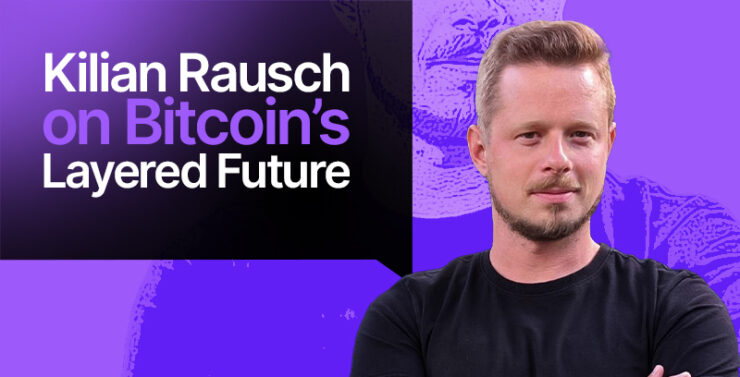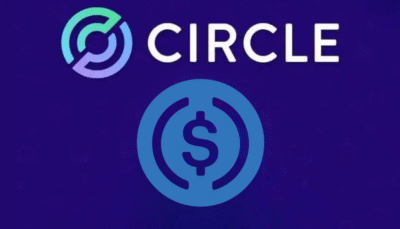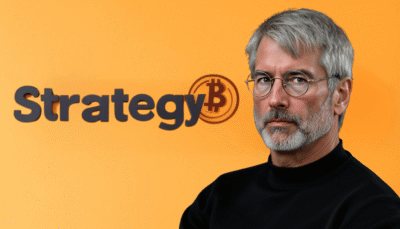In a crypto industry obsessed with multi-chain ecosystems and shiny new protocols, few builders have kept the faith with Bitcoin like Kilian Rausch. As the CEO and co-founder of Boltz, a non-custodial exchange leveraging the Lightning and Liquid networks, Kilian’s journey isn’t just about technical breakthroughs — it’s about conviction, persistence, and a deep belief that Bitcoin can be more than just digital gold. His mission? To unlock Bitcoin’s layered potential and preserve its sovereignty in an increasingly regulated world.
“We realized that these channels are all very fast and nice but they have liquidity issues. So we needed some helper on the site that helps users to manage liquidity. And that’s actually how Boltz was born. It’s a thing that survived.”
A Chance Encounter in Shanghai
Kilian’s crypto story doesn’t start with Ethereum or DeFi or NFTs. It begins with Bitcoin — and a serendipitous encounter in China.
In 2015, while living in Shanghai, Kilian crossed paths with Samson Mow, then a prominent figure at BTC China (BTCC).
“I stumbled… into Samson Mow,” he recalled in his recent appearance on The Coinrock Show.
“And he convinced me it was a good idea to start working for BTCC.”
Days later, Kilian was hired as a product manager for a Bitcoin mining pool, completely unaware of what Bitcoin really was.
Thrown into the deep end, he quickly learned the ins and outs of mining infrastructure, wallets, and user experience. He began refining his focus around one idea: building simple, accessible Bitcoin tools for the average user.
“I started with a new mobile wallet… the main idea was basically to send Bitcoin to a phone number instead of a Bitcoin address.”
It was this early immersion in user experience that planted the seed for his future work on atomic swaps and cross-layer interoperability.
Watch Kilian’s full interview on The Coinrock Show below.
Building and Failing — Then Building Again
Kilian’s next big project was OpenDEX, an ambitious attempt to build a decentralized exchange on the Lightning Network. Years before the rise of Uniswap or Layer 2 rollups, Kilian and his team were experimenting with atomic swaps, trying to enable instant, trustless trades between Bitcoin and Ethereum-based stablecoins.
The project was ahead of its time — too ahead. Liquidity issues, complex infrastructure, and a lack of demand ultimately doomed OpenDEX. But it left behind a side project that would become something more: Boltz.
“It was technically very challenging and a surprise that failed in the end, because well, I guess we’re about seven, eight years too early. But it got me into the basic primitive of atomic swaps, the technology, the very technology we’re using today.”
By 2023, Kilian and his co-founders went full-time on Boltz. The concept was deceptively simple: a non-custodial bridge between Bitcoin layers. No altcoins, no flashy tokens — just Bitcoin, in all its forms.
Boltz’s commitment to being non-custodial isn’t just a feature — it’s foundational. In an era of increasing regulatory pressure, Kilian made it clear from the beginning: if Boltz were ever forced to implement KYC, the business would die.
“So we actually had KYC in mind from the get-go, in a sense that we are aware that KYC will kill our business. If we ever have to KYC our users, we’re dead. We knew that, right? So we are a Bitcoin bridge and it has to work with a button click.”
To achieve this, Boltz relies on atomic swaps, which guarantee either a completed exchange or a full refund — all without the platform ever touching the user’s funds.
Their architecture allows seamless swaps between Bitcoin on-chain, Lightning, Liquid, and even Rootstock, with plans to integrate emerging layers like ARK and BitVM. But perhaps more importantly, the company moved its legal entity to El Salvador — both as a strategic jurisdictional play and as a vote of confidence in a Bitcoin-friendly future.
“We chose El Salvador in the end because we felt, or we bet on that in future also we’ll be welcome there and we are. it had a couple of perks like that we also could pay our taxes directly in Bitcoin. Now it’s not direct, direct anymore, but it’s still possible”
Scaling Bitcoin, One Layer at a Time
While the rest of the crypto world looks toward Ethereum scaling solutions, Kilian is doubling down on Bitcoin. He sees the ecosystem evolving — and he’s ready to build the bridges to connect its layers.
From enabling mobile wallets to swap silently between Lightning and Liquid, to supporting developers building on Rootstock and BitVM, Boltz is becoming the de facto infrastructure layer for Bitcoin’s own multichain moment.
The vision is clear: not to compete with Ethereum or Solana, but to expand Bitcoin’s utility without compromising its principles.
“Our vision is to be the non-custodial bridge between Bitcoin layers. And now, an entire ecosystem of Bitcoin layers is developing..”
Kilian is bullish not just on Bitcoin as money, but on Bitcoin as a platform. His excitement about programmable layers like Rootstock and EVM rollups on Bitcoin isn’t hypothetical — Boltz is already helping users move assets across these rails, non-custodially and instantly.
A Quiet Rebellion Against the Status Quo
In an industry often driven by hype, Boltz’s steady rise — from a side project to a mission-critical Bitcoin tool — reflects Kilian’s quiet rebellion against the status quo. He’s not interested in making noise. He’s interested in making Bitcoin work.
No VC fanfare. No token launches. Just infrastructure, layered carefully, one block at a time.
“We never even opened a bank account. I’m proud of that.”
Kilian Rausch embodies a new generation of Bitcoiners — not maximalist gatekeepers, but pragmatic builders, working to make Bitcoin more useful, private, and interoperable. His journey is proof that you don’t have to abandon Bitcoin to innovate — you just have to believe in what it can still become.
Where to Find Kilian Rausch
You can follow Kilian Rausch and explore more of his work through the following platforms:
- X (formerly Twitter): @kilrau
- Boltz Website: boltz.exchange
- API & Docs: docs.boltz.exchange





